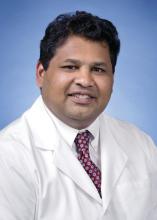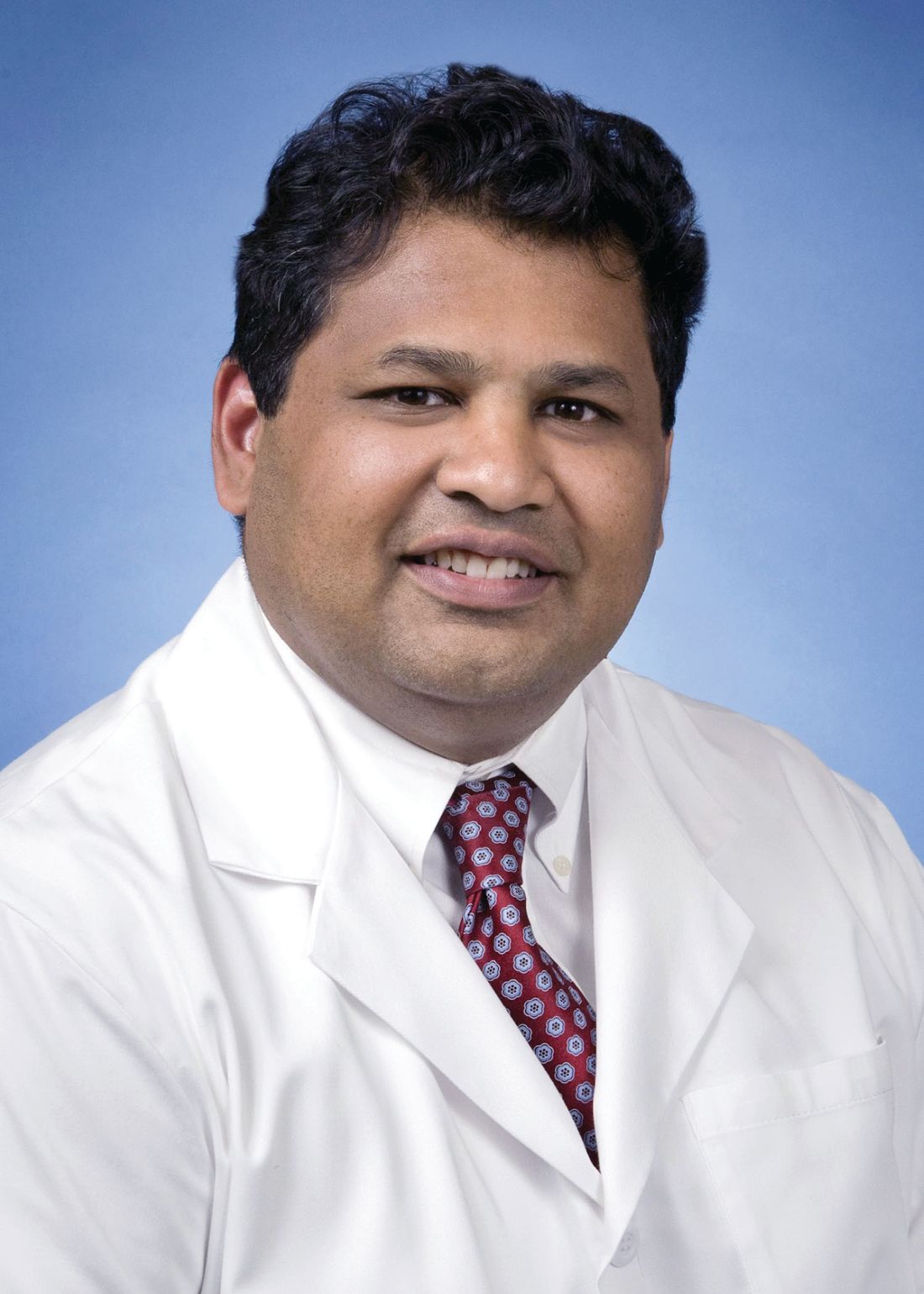User login
There is no change in the core mission of the AGA’s Center for GI Innovation and Technology (CGIT) since two cochairs took over the leadership last year. As always, the goal is to support the development and adoption of new technologies for the treatment of digestive disorders. However, the cochairs want to do more to identify and dismantle the obstacles that slow the process.
“Innovators face challenges at every stage, from attracting investors to refining an idea into a viable clinical tool. Even once a device has obtained regulatory approval, issues of training and reimbursement can keep a good idea from improving patient care,” explained V. Raman Muthusamy, MD, director of interventional endoscopy and general GI endoscopy, at the University of California, Los Angeles. “We want to identify these obstacles and use the CGIT resources to provide solutions.”
“CGIT was set up to foster collaboration between stakeholders in new technology, but we have been increasingly concerned about the roadblocks that keep important technology from getting into the hands of clinicians,” Dr. Komanduri said at the 2018 AGA Tech Summit sponsored by the AGA Center for GI Innovation and Technology. “In addition to the role that the CGIT has played in bringing together interested parties, we are taking a closer look at how we can help accelerate both the processes of development and implementation once the technology is available.”
One strategy is to expand the presence and activities of CGIT. Established in 2010, the CGIT is best known for the AGA Tech Summit, which has been an important event for bringing together innovators, investors, clinicians, and those involved in navigating regulatory issues, but Dr. Komanduri said that he and Dr. Muthusamy are working to make the summit “more of a launching point” for ideas and projects that follow the meeting.
“The AGA Tech Summit has provided an opportunity to recognize hot areas, and the goal will be to drive new ideas forward after the meeting by facilitating communication and cooperation among those who can contribute to advancing the concepts, ” Dr. Komanduri explained.
To help focus the mission of the CGIT, six areas of concentration have been identified. These are colorectal cancer screening and diagnosis, endoscope reprocessing, weight loss interventions, interventional endoscopy platforms, antireflux devices, and tissue resection technologies, according to Dr. Muthusamy. These focus areas do not preclude CGIT involvement in other types of innovations, but Dr. Muthusamy said this list helps emphasize strengths for those who do not yet consider CGIT a resource.
“We want to intersect better with the AGA members who think CGIT is not relevant to them because they are not involved in the development of new technology,” Dr. Muthusamy said. In drawing attention to these specific areas, Dr. Muthusamy said, “We plan to do more with technology updates and keep the AGA membership aware of how opportunities in clinical medicine are evolving through technological innovation.”
The mission of CGIT begins with the encouragement of new technology but it includes all the steps needed to shepherd innovations into routine clinical application. This includes helping with the strategies that will incentivize clinicians to learn the technology. While this has always been part of the CGIT mission, the cochairs are increasing their attention to eliminating delays in the process, which they recognize as a threat to fulfilling the CGIT mandate.
“There are challenges to bringing new ideas to the marketplace, and we think that pace between idea and product is too slow,” Dr. Komanduri said. “We want to increase the emphasis on finding ways to streamline the process.”
There is no change in the core mission of the AGA’s Center for GI Innovation and Technology (CGIT) since two cochairs took over the leadership last year. As always, the goal is to support the development and adoption of new technologies for the treatment of digestive disorders. However, the cochairs want to do more to identify and dismantle the obstacles that slow the process.
“Innovators face challenges at every stage, from attracting investors to refining an idea into a viable clinical tool. Even once a device has obtained regulatory approval, issues of training and reimbursement can keep a good idea from improving patient care,” explained V. Raman Muthusamy, MD, director of interventional endoscopy and general GI endoscopy, at the University of California, Los Angeles. “We want to identify these obstacles and use the CGIT resources to provide solutions.”
“CGIT was set up to foster collaboration between stakeholders in new technology, but we have been increasingly concerned about the roadblocks that keep important technology from getting into the hands of clinicians,” Dr. Komanduri said at the 2018 AGA Tech Summit sponsored by the AGA Center for GI Innovation and Technology. “In addition to the role that the CGIT has played in bringing together interested parties, we are taking a closer look at how we can help accelerate both the processes of development and implementation once the technology is available.”
One strategy is to expand the presence and activities of CGIT. Established in 2010, the CGIT is best known for the AGA Tech Summit, which has been an important event for bringing together innovators, investors, clinicians, and those involved in navigating regulatory issues, but Dr. Komanduri said that he and Dr. Muthusamy are working to make the summit “more of a launching point” for ideas and projects that follow the meeting.
“The AGA Tech Summit has provided an opportunity to recognize hot areas, and the goal will be to drive new ideas forward after the meeting by facilitating communication and cooperation among those who can contribute to advancing the concepts, ” Dr. Komanduri explained.
To help focus the mission of the CGIT, six areas of concentration have been identified. These are colorectal cancer screening and diagnosis, endoscope reprocessing, weight loss interventions, interventional endoscopy platforms, antireflux devices, and tissue resection technologies, according to Dr. Muthusamy. These focus areas do not preclude CGIT involvement in other types of innovations, but Dr. Muthusamy said this list helps emphasize strengths for those who do not yet consider CGIT a resource.
“We want to intersect better with the AGA members who think CGIT is not relevant to them because they are not involved in the development of new technology,” Dr. Muthusamy said. In drawing attention to these specific areas, Dr. Muthusamy said, “We plan to do more with technology updates and keep the AGA membership aware of how opportunities in clinical medicine are evolving through technological innovation.”
The mission of CGIT begins with the encouragement of new technology but it includes all the steps needed to shepherd innovations into routine clinical application. This includes helping with the strategies that will incentivize clinicians to learn the technology. While this has always been part of the CGIT mission, the cochairs are increasing their attention to eliminating delays in the process, which they recognize as a threat to fulfilling the CGIT mandate.
“There are challenges to bringing new ideas to the marketplace, and we think that pace between idea and product is too slow,” Dr. Komanduri said. “We want to increase the emphasis on finding ways to streamline the process.”
There is no change in the core mission of the AGA’s Center for GI Innovation and Technology (CGIT) since two cochairs took over the leadership last year. As always, the goal is to support the development and adoption of new technologies for the treatment of digestive disorders. However, the cochairs want to do more to identify and dismantle the obstacles that slow the process.
“Innovators face challenges at every stage, from attracting investors to refining an idea into a viable clinical tool. Even once a device has obtained regulatory approval, issues of training and reimbursement can keep a good idea from improving patient care,” explained V. Raman Muthusamy, MD, director of interventional endoscopy and general GI endoscopy, at the University of California, Los Angeles. “We want to identify these obstacles and use the CGIT resources to provide solutions.”
“CGIT was set up to foster collaboration between stakeholders in new technology, but we have been increasingly concerned about the roadblocks that keep important technology from getting into the hands of clinicians,” Dr. Komanduri said at the 2018 AGA Tech Summit sponsored by the AGA Center for GI Innovation and Technology. “In addition to the role that the CGIT has played in bringing together interested parties, we are taking a closer look at how we can help accelerate both the processes of development and implementation once the technology is available.”
One strategy is to expand the presence and activities of CGIT. Established in 2010, the CGIT is best known for the AGA Tech Summit, which has been an important event for bringing together innovators, investors, clinicians, and those involved in navigating regulatory issues, but Dr. Komanduri said that he and Dr. Muthusamy are working to make the summit “more of a launching point” for ideas and projects that follow the meeting.
“The AGA Tech Summit has provided an opportunity to recognize hot areas, and the goal will be to drive new ideas forward after the meeting by facilitating communication and cooperation among those who can contribute to advancing the concepts, ” Dr. Komanduri explained.
To help focus the mission of the CGIT, six areas of concentration have been identified. These are colorectal cancer screening and diagnosis, endoscope reprocessing, weight loss interventions, interventional endoscopy platforms, antireflux devices, and tissue resection technologies, according to Dr. Muthusamy. These focus areas do not preclude CGIT involvement in other types of innovations, but Dr. Muthusamy said this list helps emphasize strengths for those who do not yet consider CGIT a resource.
“We want to intersect better with the AGA members who think CGIT is not relevant to them because they are not involved in the development of new technology,” Dr. Muthusamy said. In drawing attention to these specific areas, Dr. Muthusamy said, “We plan to do more with technology updates and keep the AGA membership aware of how opportunities in clinical medicine are evolving through technological innovation.”
The mission of CGIT begins with the encouragement of new technology but it includes all the steps needed to shepherd innovations into routine clinical application. This includes helping with the strategies that will incentivize clinicians to learn the technology. While this has always been part of the CGIT mission, the cochairs are increasing their attention to eliminating delays in the process, which they recognize as a threat to fulfilling the CGIT mandate.
“There are challenges to bringing new ideas to the marketplace, and we think that pace between idea and product is too slow,” Dr. Komanduri said. “We want to increase the emphasis on finding ways to streamline the process.”

